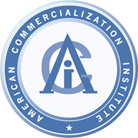 |
High Paying
US Jobs, Economic
Empowerment
&
Revitalization
of
States through Federal Power |
"Critical Field"
Technology Innovation
&
Maximized Profits on
R&D and Investments |
Prevention of Biochemical
and Nuclear Proliferation
&
Homeland Security
Technologies |
POP treatment for skin and autoimmune
diseases: psoriasis, eczema, rheumatoid arthritis, T-cell lymphoma, among others
An inexpensive “at home treatment” of skin and autoimmune
diseases without the side effects associated with comparable traditional therapy
is protected by two Russian patents and is available for commercialization. A
new patent on design of the photochemical reactor for POP-preparation and
clinical methods for POP-treatment is being prepared.
Successful double blind clinical trial performed on numerous eczema patients.
Successful preliminary clinical studies indicate that POP is efficient for
treatment of psoriasis, cutaneous T-lymphoma, piodermia, rheumatoid arthritis
and some other skin and autoimmune diseases. Relief was achieved after one week
of POP-treatment with mean remission period of 8 months.
Traditionally the main and most effective treatment for skin and autoimmune
diseases is PUVA therapy, that includes two stages: oral intake of drug-
psoralen and the sequential whole body exposure to ultraviolet light. The
necessary high doze UV-exposure causes skin and eye hypersensitivity to
sunlight, sunburn, induction of cataract of eyes and increases the risk of skin
cancer. It is also a very expensive procedure and is recommended to be performed
in a hospital.
15 million Americans suffer from psoriases and eczema; The annual outpatient
market for psoriases is $3 Billion; Large Market opportunities for all other
diseases that can be treated; Treatment of African-Americans who have to be
treated with a much higher UV-intensity with a dramatic increase in skin cancer
risk creates an additional market opportunity
By irradiating the drug-psoralen solution itself (in vitro) before its oral
intake a similar effect to PUVA treatment is achieved without the need for
UV-irradiation. An amount of photo-treated psoralen can also be reduced 50 times
to achieve comparable effect as can be achieved with a much larger dose of
conventional psoralen in PUVA therapy. The elimination of the UV-exposure and
considerable decrease in psoralen dose practically eliminates the side effects.
